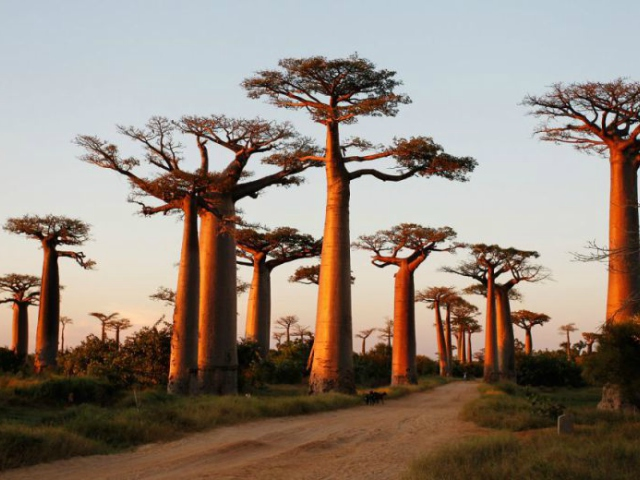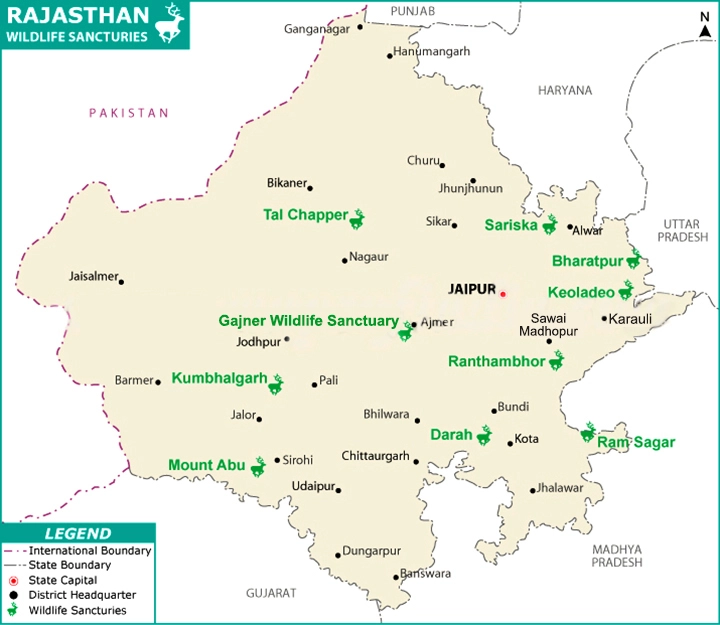Madhya Pradesh Switch to Hindi
Committee to Implement Biodiversity Act
Why in News?
Recently, the Madhya Pradesh high court ordered the state government to set up a committee to implement the Biodiversity Act, 2002.
Key Points
- The high court started hearing the case as a Public Interest Litigation (PIL) after taking suo motu cognisance of a report published on protests by tribals against the translocation of Baobab trees by a Hyderabad businessman.
- The report highlighted the heritage and historical value of the trees, native to Africa, but likely brought to this corner of Madhya Pradesh by African soldiers hired by the local Islamic Kingdoms between the 10th and 17th century.
- The state government subsequently stripped the forest department of power to permit translocation of Dhar’s famed Baobab trees, and decided that this can be done only by the State Biodiversity Board.
The Biological Diversity Act, 2002
- The act was enacted in 2002, it aims at the conservation of biological resources, managing its sustainable use and enabling fair and equitable sharing benefits arising out of the use and knowledge of biological resources with the local communities.
Baobab Trees
- Type of Trees: Baobabs are deciduous trees ranging in height from 5 to 20 meters.
- Deciduous forest is a vegetation composed primarily of broad-leaved trees that shed all their leaves during one season.
- Found in: The African baobab (Adansonia digitata) is one of the nine species of baobab and is native to mainland Africa. They are also found in African Savannah.
- The African savanna ecosystem is a tropical grassland with warm temperatures year-round and with its highest seasonal rainfall in the summer.
- Tree of Life: As African baobab is a succulent, which means that during the rainy season it absorbs and stores water in its vast trunk, enabling it to produce a nutrient-dense fruit in the dry season when all around is dry and arid.


Bihar Switch to Hindi
Kanwar Lake
Why in News?
Once a haven for migratory birds, Asia’s largest freshwater oxbow lake and Bihar’s only Ramsar site, Kanwar is gradually disappearing.
Key Points
- An oxbow lake is a curved lake formed alongside a winding river as a result of erosion and sediment deposition over time.
- Oxbow lakes are typically crescent-shaped and are common features in floodplains and low-lying areas near rivers.
- Kanwar lake, which used to be a popular tourist spot, has fallen victim to encroachments and is now battling for its existence.
- The uncontrolled expansion of land and building of embankments along the nearby Burhi Gandak river has blocked the main water entry point to the wetland.
- There is a shared belief that with governmental initiatives to restore the lake, it has the potential to reclaim its past grandeur and transform into a significant tourist destination, offering new job prospects for residents.
Kanwar Lake
- It is also known as Kabartal jheel.
- It is a residual oxbow lake, formed due to the meandering of Gandak river, a tributary of Ganga.
- It is covering the majority of the Indo-Gangetic plains in northern Bihar.
- The Wetland is an important stopover along the Central Asian Flyway, with 58 migratory waterbirds using it to rest and refuel.
- It is also a valuable site for fish biodiversity with over 50 species documented.
- Five critically endangered species inhabit the site, including three vultures – the red-headed vulture (Sarcogyps calvus), white-rumped vulture (Gyps bengalensis) and Indian vulture (Gyps indicus) – and two waterbirds, the sociable lapwing (Vanellus gregarius) and Baer’s pochard (Aythya baeri).
- Threats: Major threats to the site include water management activities such as drainage, water abstraction, damming and canalization.


Rajasthan Switch to Hindi
SC Halts All Mining Activities Around Sariska Tiger Reserve
Why in News?
Recently, the Supreme Court halted all mining activities being undertaken around the Sariska Tiger Reserve in Rajasthan.
- No mining activity will be permissible within one-kilometre radius of a Critical Tiger Habitat (CTH).
Key Points
- The court asked the Rajasthan government to formulate a closure plan or take necessary steps for compliance with its orders.
- The Rajasthan government told the court that the prohibition on mining, as ordered in April 2023, was applicable to the Eco-Sensitive Zone (of 1 km) from National Parks and Wildlife Sanctuaries and it did not apply to Tiger Reserves.
- The judgment of April 2023 stated that mining within the national park and wildlife sanctuary and within an area of 1 km from the boundary of such national park and wildlife sanctuary shall not be permissible.
- According to the court, Section 38XA of Wildlife Protection Act 1972 shows that tiger reserves stand on a higher pedestal than wildlife sanctuaries and national parks.
Sariska Tiger Reserve
- About:
- Sariska Tiger Reserve is located in Aravali hills and forms a part of the Alwar District of Rajasthan.
- Sariska was declared a wildlife sanctuary in 1955 and was declared the tiger reserve later in 1978, making it a part of India's Project Tiger.
- The Reserve houses ruined temples, forts, pavilions and a palace.
- Kankarwadi fort is located in the centre of the Reserve and it is said that Mughal emperor Aurangzeb had imprisoned his brother Dara Shikoh at this fort in struggle for succession to the throne.
- The Reserve also houses a famous temple of lord Hanuman at Pandupole related to Pandavas.
- Flora and Fauna:
- The Reserve is immensely rich in flora and fauna, and is famous for Royal Bengal Tiger.
- The park has populations of leopards, Nilgai, Sambar, chital etc.


Chhattisgarh Switch to Hindi
Leopard Poaching in Chhattisgarh
Why in News?
Recently, the carcass of the leopard, aged around seven years, was found in Chaitma forest range under Katghora forest division.
Key Points
- According to the officials, some of the body parts of the leopard were missing which triggered the speculation of poaching.
- The illegal hunting, capturing, or killing of wildlife, often for their valuable body parts, such as tusks, horns, skins, or bones.
- According to data available from India's Wildlife Crime Control Bureau (WCCB) and attached police authorities, over 9,253 poachers were arrested between 2012 and 2018 in the country, but the rate of conviction was just 2%.
- Illegal wildlife trade is driven by high profit margins and, in many cases, the high prices paid for rare species.
- Vulnerable wild animals are pushed further to the edge of extinction when nature can't replenish their stocks to keep up with the rate of human consumption.
- Poaching is particularly prevalent in the States of Madhya Pradesh, Uttar Pradesh, West Bengal, Bihar, Maharashtra, Andhra Pradesh, Karnataka, Kerala, Rajasthan, Uttarakhand and Assam.
Leopards
- Scientific Name: Panthera pardus
- About:
- The leopard is the smallest of the Big Cats (of genus Panthera namely the Tiger, Lion, Jaguar, Leopard, and Snow Leopard), and known for its ability to adapt in a variety of habitats.
- A nocturnal animal, the leopard hunts by night.
- It feeds on smaller species of herbivores found in its range, such as the chital, hog deer and wild boar.
- Melanism is a common occurrence in leopards, wherein the entire skin of the animal is black in colour, including its spots.
- A melanistic leopard is often called black panther and mistakenly thought to be a different species.
- Habitat:
- It occurs in a wide range in sub-Saharan Africa, in small parts of Western and Central Asia, on the Indian subcontinent to Southeast and East Asia.
- The Indian leopard (Panthera pardus fusca) is a leopard widely distributed on the Indian subcontinent.


Uttar Pradesh Switch to Hindi
Prayagraj to Get 2nd SSH Lab
Why in News?
Prayagraj soon to get its second Sentinel Surveillance Hospital Lab (SSH Lab), a vital facility to diagnose dengue virus.
Key Points
- Currently, the district of Prayagraj only has a SSH lab located at the department of microbiology in Moti Lal Nehru (MLN) Medical College.
- At a workshop held at MLN College to observe National Dengue Day (16th May 2024), it was discussed that plans are in progress to establish a specialized dengue testing laboratory at Tej Bahadur Sapru hospital, also known as Beli hospital, before the end of 2024.
- The theme of Dengue Day 2024 was to connect with the community and control dengue.
Dengue
- About:
- Dengue is a mosquito-borne tropical disease caused by the dengue virus (Genus Flavivirus), transmitted by several species of female mosquito within the genus Aedes, principally Aedes aegypti.
- This mosquito also transmits chikungunya, yellow fever and Zika infection.
- There are 4 distinct, but closely related, serotypes (separate groups within a species of microorganisms that all share a similar characteristic) of the virus that cause dengue (DEN-1, DEN-2, DEN-3 and DEN-4).
- Dengue is a mosquito-borne tropical disease caused by the dengue virus (Genus Flavivirus), transmitted by several species of female mosquito within the genus Aedes, principally Aedes aegypti.
- Symptoms:
- Sudden high fever, severe headaches, pain behind the eyes, severe bone, joint, and muscle pain, etc.
- Diagnosis and Treatment:
- Diagnosis of dengue infection is done with a blood test.
- There is no specific medicine to treat dengue infection.










%20MPPCS%202025%20Desktop%20E.jpg)
%20MPPCS%202025%20Mobile%20E%20(1).jpg)










.png)
.png)











 PCS Parikshan
PCS Parikshan





